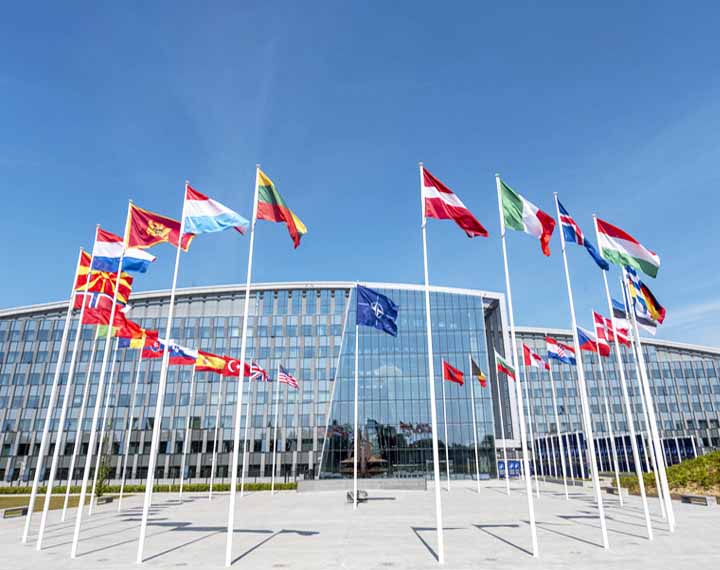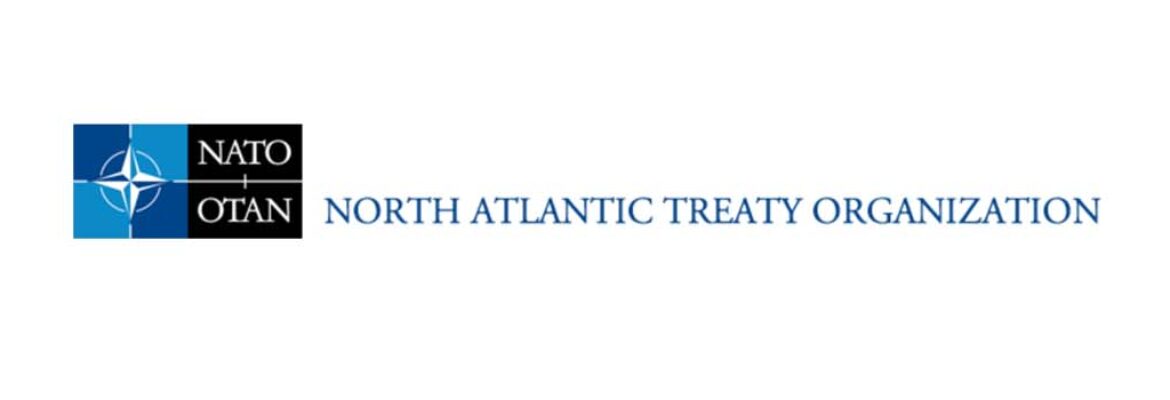 Nato Head
Nato Head
NATO membership is open to “any other European state in a position to further the principles of this Treaty and to contribute to the security of the North Atlantic area.” NATO also has what it calls the Membership Action Plan. It helps aspiring members prepare for membership and meet key requirements by providing practical advice and targeted assistance.
Security in our daily lives is key to our well-being. NATO’s purpose is to guarantee the freedom and security of its members through political and military means.
POLITICAL – NATO promotes democratic values and enables members to consult and cooperate on defence and security-related issues to solve problems, build trust and, in the long run, prevent conflict.
MILITARY – NATO is committed to the peaceful resolution of disputes. If diplomatic efforts fail, it has the military power to undertake crisis-management operations. These are carried out under the collective defence clause of NATO’s founding treaty – Article 5 of the Washington Treaty or under a United Nations mandate, alone or in cooperation with other countries and international organisations.
Nato Head Quarters
NATO Headquarters is the political and administrative centre of the Alliance. It is located at Boulevard Leopold III in Brussels, Belgium. It offers a venue for representatives and experts from all member countries to consult on a continuous basis, a key part of the Alliance’s consensual decision-making process, and to work with partner countries.
Role, responsibilities and people
NATO Headquarters is where representatives from all the member states come together to make decisions on a consensus basis. It also offers a venue for dialogue and cooperation between partner countries and NATO member countries, enabling them to work together in their efforts to bring about peace and stability.
Roughly 4,000 people work at NATO Headquarters on a full-time basis. Of these, some 2,000 are members of national delegations and supporting staff members of national military representatives to NATO. About 300 people work at the missions of NATO’s partners countries. Some 1,000 are civilian members of the International Staff or NATO agencies located within the Headquarters and about 500 are members of the International Military Staff, which also includes civilians.
Working mechanism
With permanent delegations of NATO members and partners based at the Headquarters, there is ample opportunity for informal and formal consultation on a continuous basis, a key part of the Alliance’s decision-making process.
Meetings at NATO Headquarters take place throughout the year, creating a setting for dialogue among member states. Approximately 6,000 meetings take place every year among NATO bodies, involving staff based at the Headquarters as well as scores of experts who travel to the site.
Evolution
In 1949, Allied countries established NATO’s first Headquarters in London, the United Kingdom, at 13 Belgrave Square.
As NATO’s structure developed and more space was needed, its Headquarters moved to central Paris in April 1952. At first it was temporarily housed at the Palais de Chaillot, but it then moved to a purpose-built edifice at Porte Dauphine in 1960.
In 1966, however, France decided to withdraw from NATO’s integrated military command structure, which called for another move – this time to Brussels. The new site in Belgium was constructed in a record time of six months and was inaugurated on 16 October 1967.
By 1999, NATO Heads of State and Government came to realise that, with NATO’s enlargement and transformation, the facilities no longer met the requirements of the Alliance. They agreed to construct a new Headquarters situated across the road from the existing Headquarters, Boulevard Leopold III, Brussels. The construction of the building was finalised in 2017 and the move took place in 2018.
The design of the new building reflects the unity and adaptability of the Alliance. Its unity is manifest through the concept of interlocking fingers, while its adaptability is ensured by state-of-the-art facilities, allowing the building to adapt to the Alliance’s evolving needs. It is also equipped for the 21st century with cutting-edge information and communications technologies. Furthermore, the building helps reduce NATO’s environmental footprint by reducing energy consumption (geothermal heating in the winter and cooling in the summer), making full use of natural light via huge glass surfaces, and reducing water consumption (rain water collection via the sloped wings of the construction).


